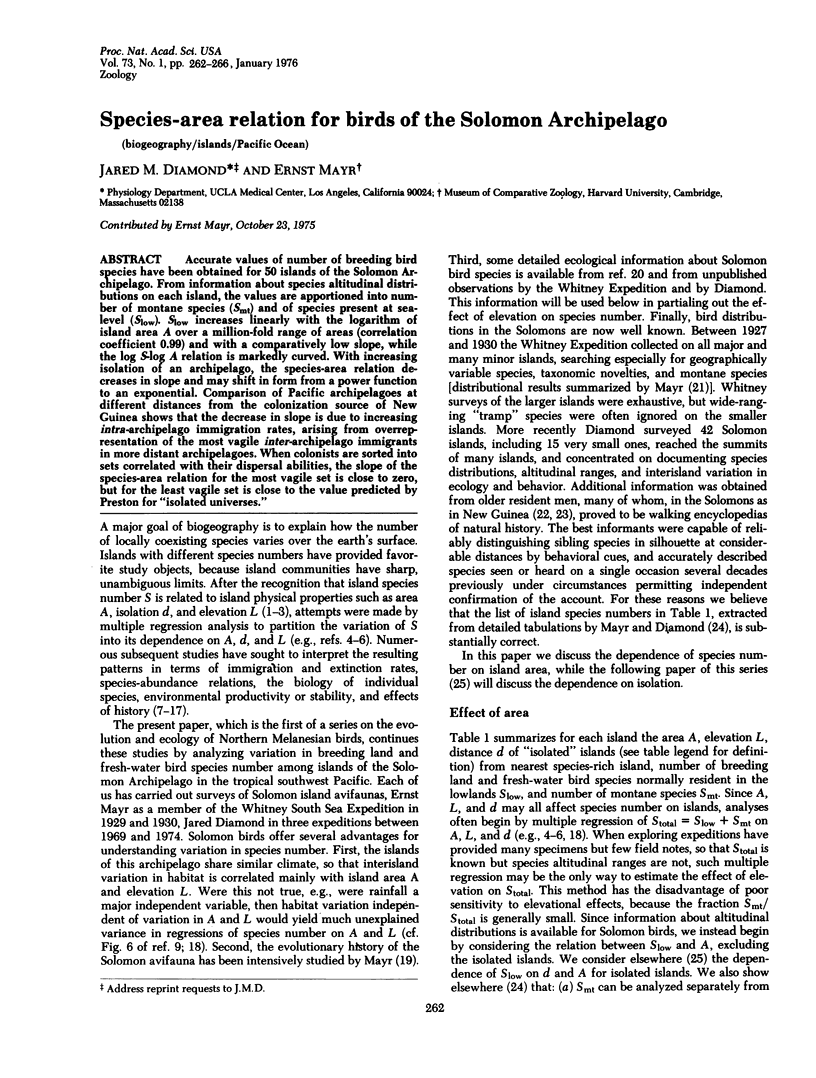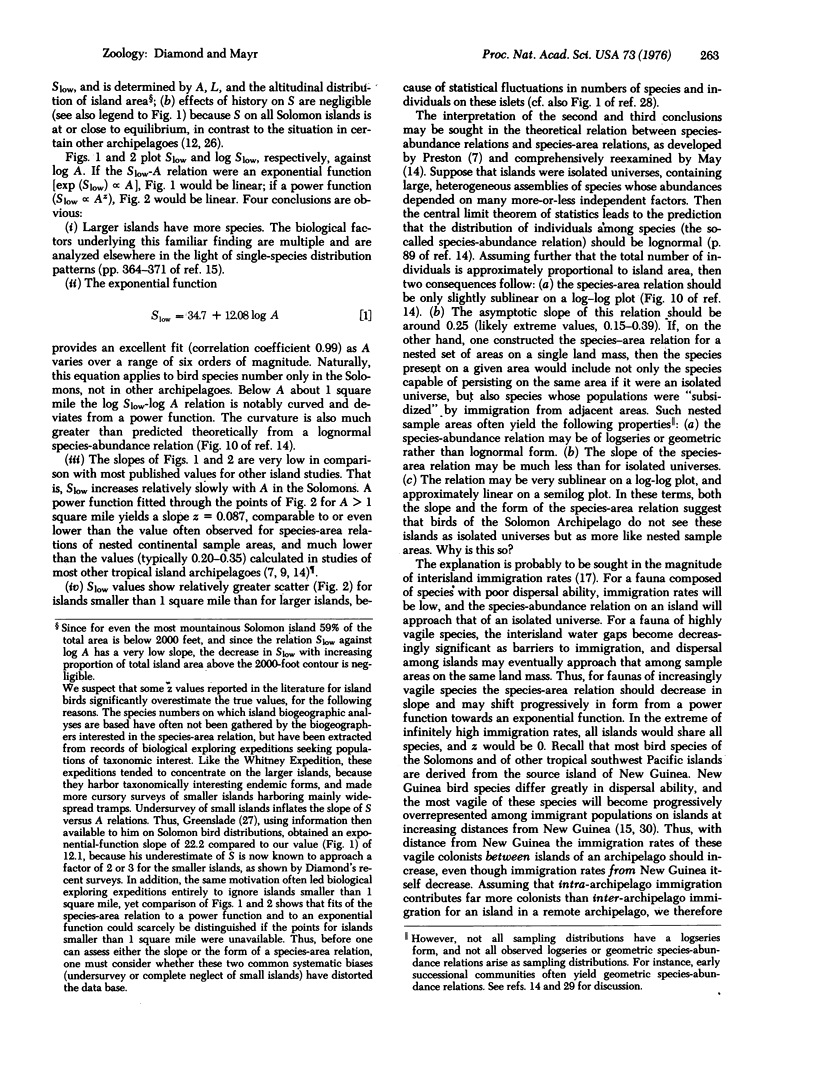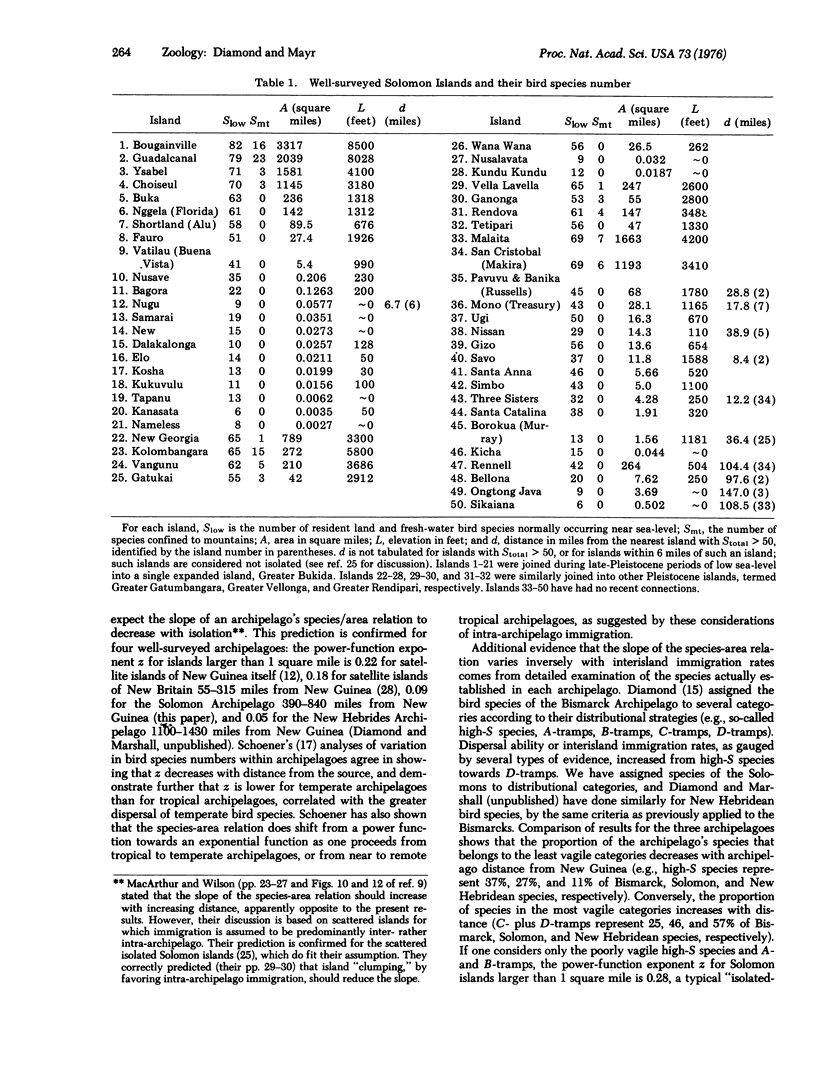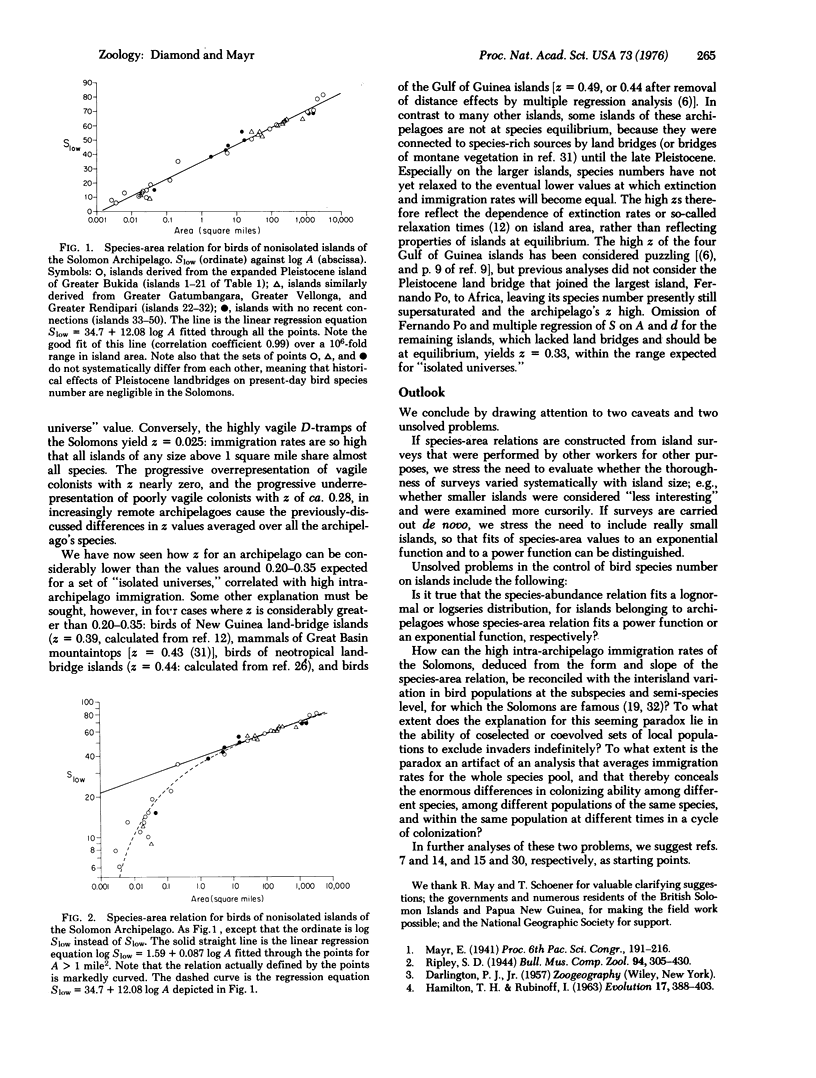Abstract
Accurate values of number of breeding bird species have been obtained for 50 islands of the Solomon Archipelago. From information about species altitudinal distributions on each island, the values are apportioned into number of montane species (Smt) and of species present at sea-level (Slow). Slow increases linearly with the logarithm of island area A over a million-fold range of areas (correlation coefficient 0.99) and with a comparatively low slope, while the log S-log A relation is markedly curved. With increasing isolation of an archipelago, the species-area relation decreases in slope and may shift in form from a power function to an exponential. Comparison of Pacific archipelagoes at different distances from the colonization source of New Guinea shows that the decrease in slope is due to increasing intra-archipelago immigration rates, arising from overrepresentation of the most vagile inter-archipelago immigrants in more distant archipelagoes. When colonists are sorted into sets correlated with their dispersal abilities, the slope of the species-area relation for the most vagile set is close to zero, but for the least vagile set is close to the value predicted by Preston for “isolated universes.”
Keywords: biogeography, islands, Pacific Ocean
Full text
PDF




Selected References
These references are in PubMed. This may not be the complete list of references from this article.
- Diamond J. M. Biogeographic kinetics: estimation of relaxation times for avifaunas of southwest pacific islands. Proc Natl Acad Sci U S A. 1972 Nov;69(11):3199–3203. doi: 10.1073/pnas.69.11.3199. [DOI] [PMC free article] [PubMed] [Google Scholar]
- Diamond J. M. Colonization of exploded volcanic islands by birds: the supertramp strategy. Science. 1974 May 17;184(4138):803–806. doi: 10.1126/science.184.4138.803. [DOI] [PubMed] [Google Scholar]
- Diamond J. M. Zoological classification system of a primitive people. Science. 1966 Mar 4;151(3714):1102–1104. doi: 10.1126/science.151.3714.1102. [DOI] [PubMed] [Google Scholar]
- Hamilton T. H., Barth R. H., Rubinoff I. THE ENVIRONMENTAL CONTROL OF INSULAR VARIATION IN BIRD SPECIES ABUNDANCE. Proc Natl Acad Sci U S A. 1964 Jul;52(1):132–140. doi: 10.1073/pnas.52.1.132. [DOI] [PMC free article] [PubMed] [Google Scholar]
- Mayr E. Avifauna: Turnover on Islands. Science. 1965 Dec 17;150(3703):1587–1588. doi: 10.1126/science.150.3703.1587. [DOI] [PubMed] [Google Scholar]


